Minks are dark-furred, semi-aquatic, and carnivorous mammals from the genera Mustela and Neogale. Otters, ferrets, and weasels are all close relatives. The American mink and the European mink are the two living animals that share the name “mink.” The sea mink, which is now extinct, was closely related to the American mink, albeit much larger. Ready to learn more? In this article, we will explore 10 incredible Mink facts. Let’s go!
1. Minks Have Many Areas They Inhabit
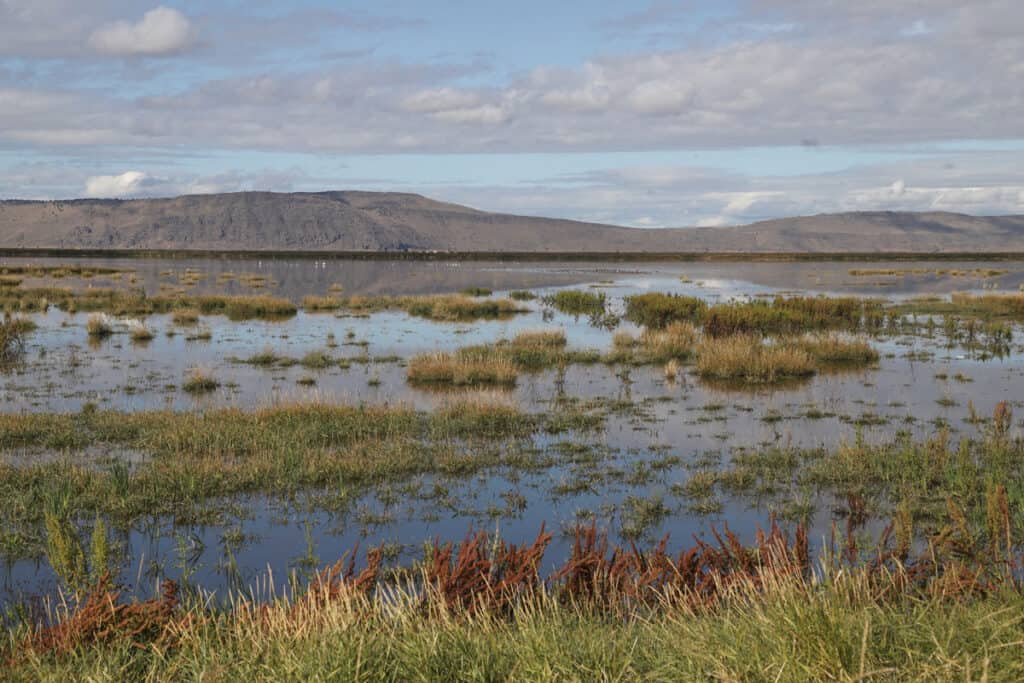
iStock.com/Nancy Strohm
Except for the extreme north of Canada and the dry southwest, the American mink is native to most of the continent. Despite this, populations of escaped fur farm animals have established themselves across most of Russia and northern Europe.
Waterways strictly delineate mink territories. They populate a wide variety of wetlands, from fresh and saltwater marshes to coastal locations and inland waterways.
2. Adult Minks Are Generally Solitary

Gallinago_media/Shutterstock.com
Males and females momentarily interact before mating in the springtime, and four kits on average are born in the late spring. Kits may travel in pairs through late fall, and young females might remain with their mothers until they reach around eleven months old. However, they are functionally sufficient by around ten weeks old, and they normally start to scatter at around 12 to 16 weeks. The distance these juveniles travel in search of their personal territory might range up to 50 kilometers.
3. Male and Female Territories Sometimes Overlap
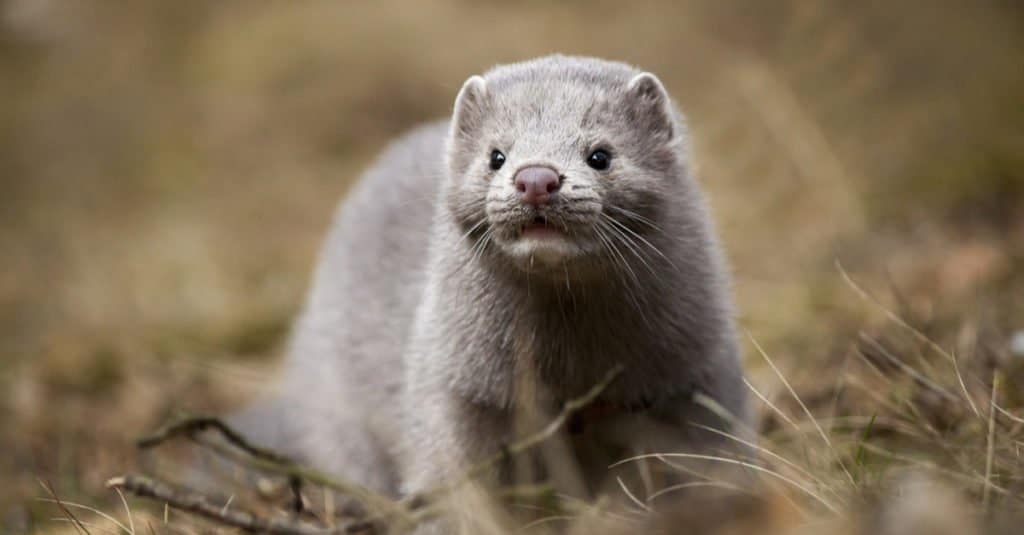
Aleksandra Saveljeva/Shutterstock.com
Minks of the same sex tend to keep to their own areas, although there might be a significant overlap in the territory between male and female mink. The average habitat size can vary anywhere from 1.1 km to 7.5 km depending on factors like sex (males typically have a larger range than females) and habitat.
4. Minks Are Carnivores
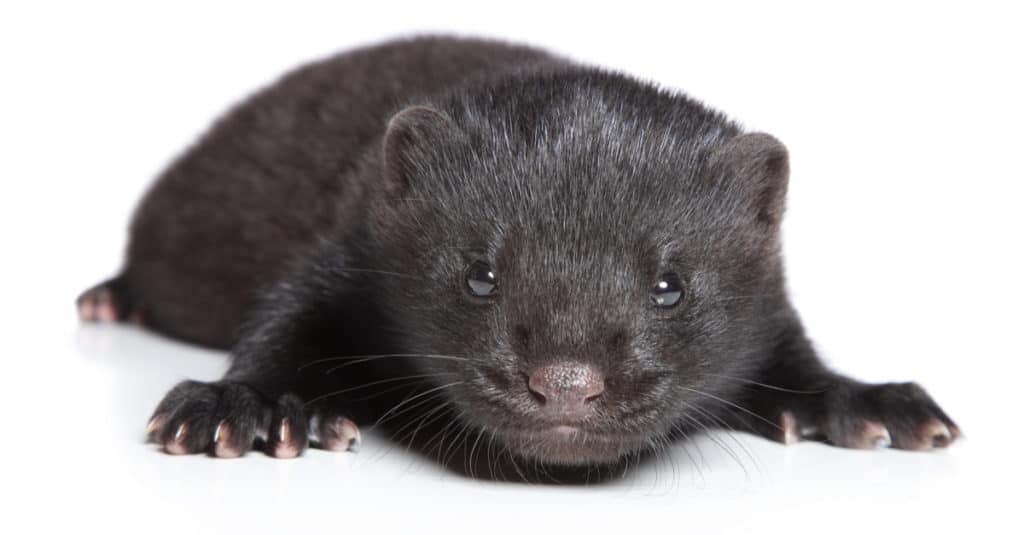
Jagodka/Shutterstock.com
The American mink is a small, slender carnivorous mammal that belongs to the mustelid (weasel) family and is characterized by its lengthy, lean body, short legs, and long tail. Minks are strict carnivores and their diet shifts with the seasons and the accessibility of food. Most of the time, it is made up of amphibians, fish, crustaceans, and small mammals, but on rare occasions, it may also include birds, bird eggs, worms, reptiles, snails, and aquatic insects.
5. Sadly, Mink Are Still Killed By The Millions Around The World
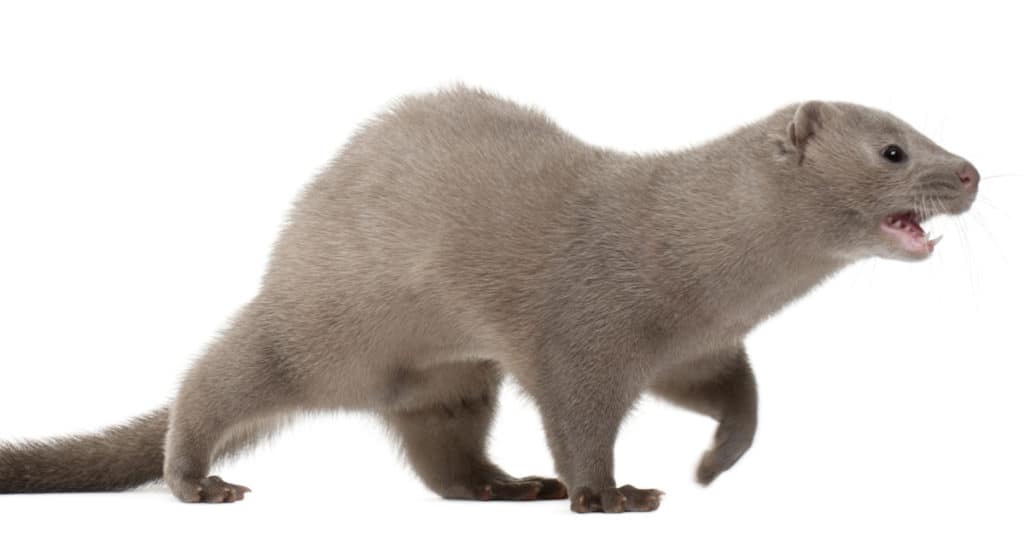
Eric Isselee/Shutterstock.com
Sadly, to create mink fur, over 41 million minks were killed in the EU in 2014. Around 18 million animals were bred and killed in Denmark alone. The biggest mink fur-producing nations in Europe were Poland and the Netherlands, producing several million furs each. About 40% of global production, was produced in China in 2014. During the 2013–14 fur auction season, mink pelts were manufactured worldwide and sold for about 3.7 billion euros.
6. There Are Mink “Farms” In Some Countries
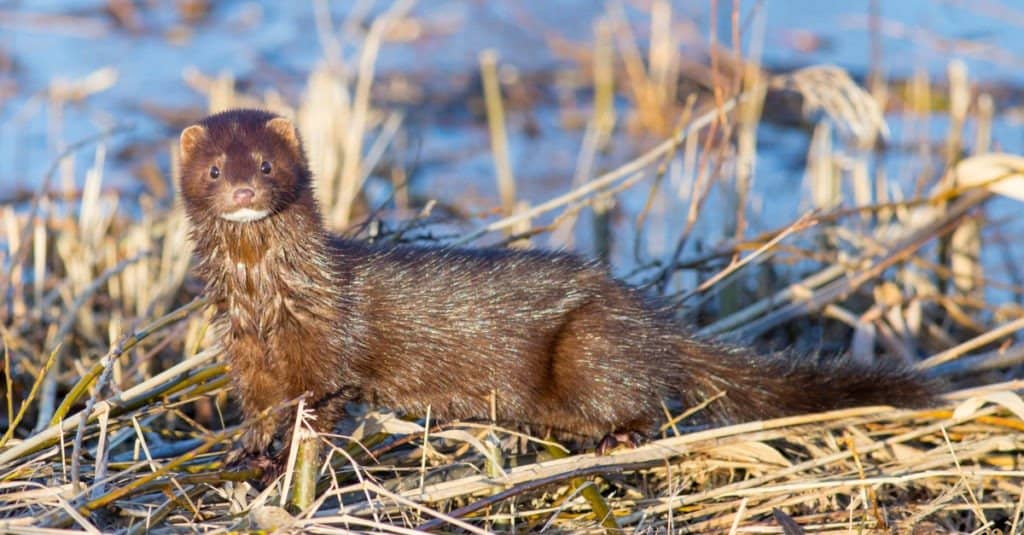
shauttra/Shutterstock.com
The predominant coat color is deep brown; however, albinos, tans, and blondes are all possible. By using selective breeding techniques, fur farms have developed a wide range of exotic colors not seen in nature. Minks used for their fur are still often trapped from the wild to be later killed for their fur. This is since farmed mink, due to their coat differences, cannot meet all the requirements of the fur business.
The wild mink isn’t used to being confined or being around people. “These undomesticated animals exploited in the fur industry are intrinsically inappropriate for farming due to their fear of humans,” said animal welfare specialists.
7. Mink Have Escaped As Well Been Released From Fur Farms
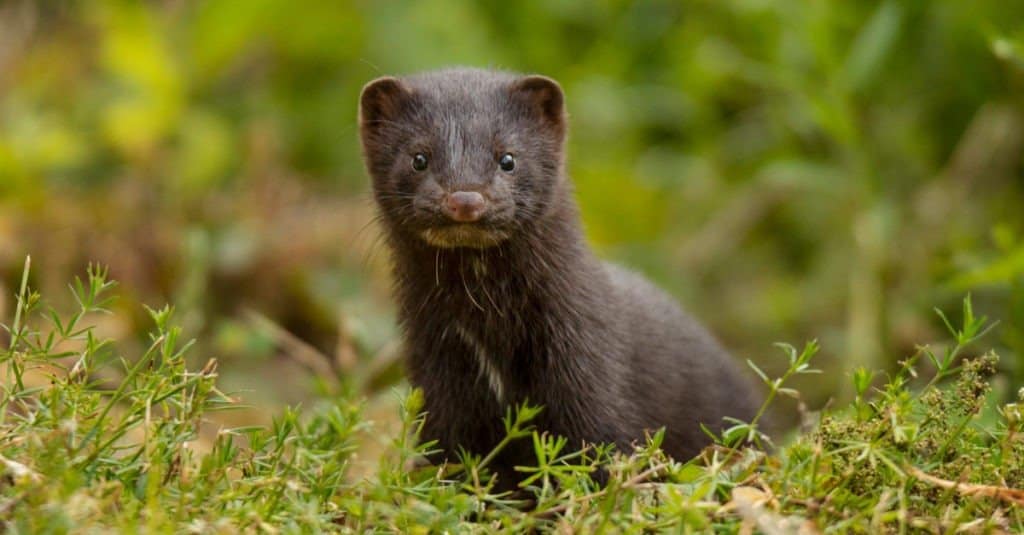
The American mink is a non-native animal that has caused extensive ecological damage and is now found over much of Northern Europe and Russia, including Ireland and the United Kingdom. The species was introduced irresponsibly, either because of accidental releases from fur farms or as a deliberate act on the part of fur breeders or trappers. In 1933, Russian fur trappers began releasing domesticated American minks into the wild to ensure a consistent supply of minks for later trapping. By the year 1948, almost 3,700 creatures had been set free.
8. The Mink Is Adapted For A Semi-Aquatic Lifestyle
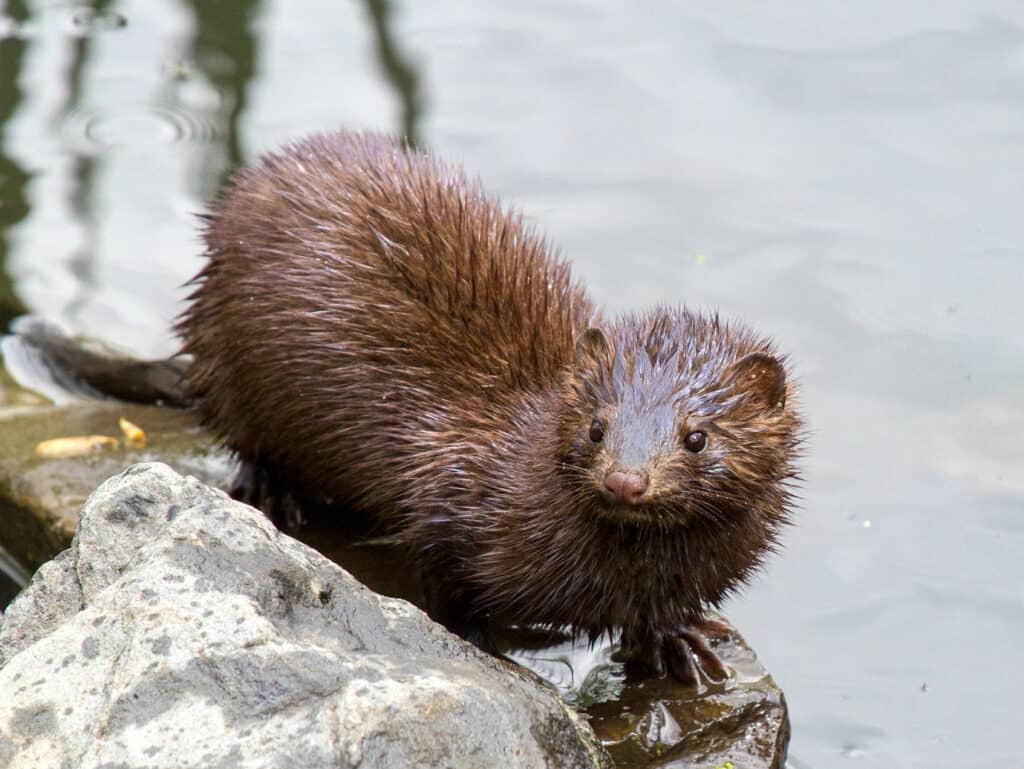
Needsmoreritalin / CC BY-SA 3.0 – License
Each mink guard hair is encircled by 9-24 underfur hairs, making the total number of guard hairs in their coat three times that of a terrestrial ferret. Slight webbing exists between their toes, but it is still easy to see. When on land, mink wander or bound along, demonstrating their impressive climbing and jumping abilities. They have a maximum depth diving capability of 5–6 meters and can swim 30–35 meters underwater.
9. Mink Breeding is Banned in Some Countries
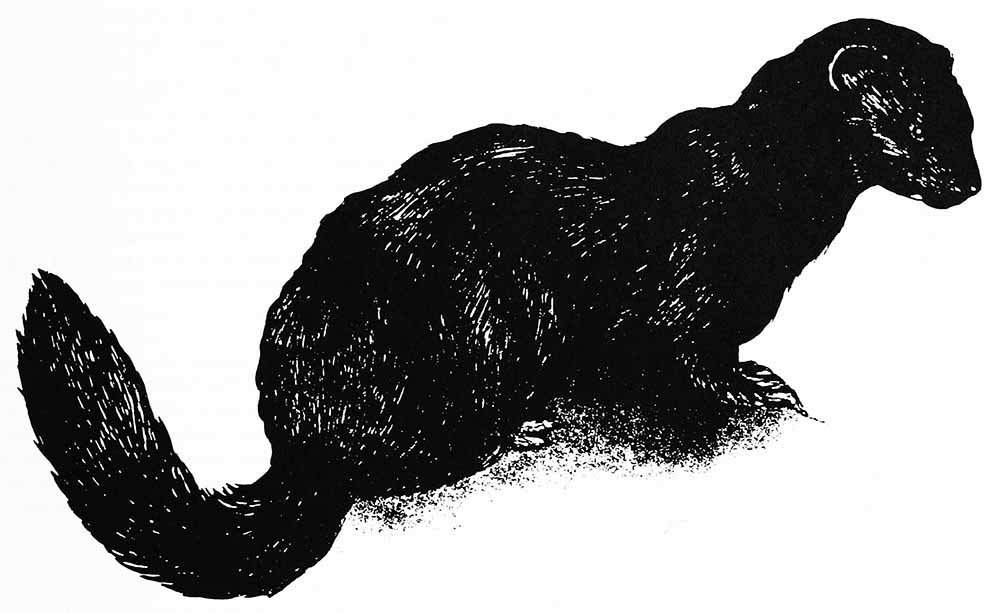
Right now, mink breeding for fur is prohibited in several countries, including the UK. The spread of alien species is just one example of the broad and severe ecological damage that the fur trade has inflicted on the planet.
10. Mink Have Multiple Dens For Different Reasons

iStock.com/Posnov
The last of our incredible mink facts is that they typically have anywhere from six to twenty different dens that they use for lounging, sleeping, eating large prey, and storing surplus food. Many are within a few short meters of the water, in crevices between tree roots or abandoned animal burrows.
The post 10 Incredible Mink Facts appeared first on AZ Animals.
from Animal News, Facts, Rankings, and More! - AZ Animals https://ift.tt/k3ScYXb